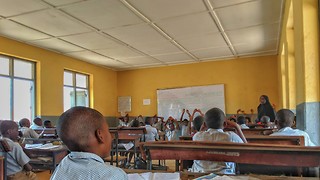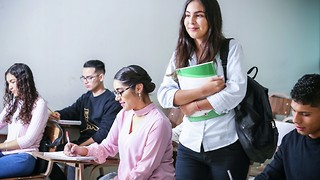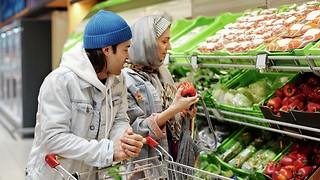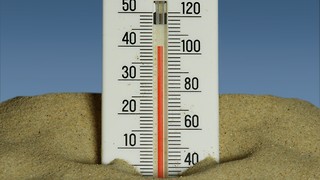Aid & Abet
Gabrielle Schwarz explores Kettle’s Yard
he enormous warehouse that normally houses Aid & Abet is closed for winter, so the artist-led contemporary art space has taken temporary residence in the comparatively miniscule gallery at Kettle’s Yard. It seems pertinent, then, that the exhibition claims to focus ‘on work dealing with transitions and thresholds’. They have clearly put a lot of thought into the transition of their space, which is beautifully and innovatively curated.
Often, when exhibiting contemporary art, in their quest to refute the claims that it’s all just meaningless rubbish, curators provide interpretative commentaries, which seek to justify the meaningfulness of the works displayed, often descending into tiresome, pretentious and ultimately distracting texts. Entering the gallery, we are informed that ‘common to the work methodology is an interest in elements of the outsider, the cult, and the uncanny’ – themes ripe with potential for polysyllabic intellectual discussion.
However, thankfully, within the exhibition, the artworks stood refreshingly alone, true to Aid & Abet’s spirit as an artist-led space. Instead, the works cross unexpected thresholds, allowing them to inhabit every corner of the space, which seems neither too minimal nor too cluttered. Sound art piece: ‘So Few People Look Into Darkness’, for example, is situated not within the building but outdoors, speakers discussing sun, shadows and light accompanied by thickly falling snow (unexpected downside: the urge to take refuge from the cold decisively beat the impulse to keep listening).
Inside, Kevin Hunt’s ‘Are You Seeing This?’ presents us with wooden black circle frames, balanced in towers on the floor, hiding behind partitions. And Sean Vicary’s arrestingly, hauntingly, superlatively beautiful film ‘Lament’ is sandwiched between the two main rooms in a miniature cinema, a wooden booth, whose unfinished knotty surface complements the film’s Welsh landscapes of forests, hills and lakes. That is not to say that the walls are bare of conventionally framed art. The themes of cult and outsider are powerfully explored in Lisa Wilkens’ ‘Prevented Portraits’, a series of lithographic images of facial coverings, subtitled with expressions of the freedom that accompanies the wearing of these unfamiliar, unplaceable masks. Do they look like gas-masks? Or burquas? A hybrid of the two? What do they say about the West’s attempts to objectify and portray unfamiliar cultures?
Throughout, the artworks provided testament to the fact that exhibition-goers need not be patronised with explications and answers for the questions explored by each piece, instead encouraging us to look at each work more closely and carefully.
While there may not be that many works on display, which for some might mean a disappointing visit (although it is free…), those works which have been selected deserve and stand up to repeated viewing. Especially when it’s snowing outside and you don’t want to cross back out into the cold.
 Comment / Cambridge South is right to be ambitious13 September 2025
Comment / Cambridge South is right to be ambitious13 September 2025 Features / Meet the Cambridge students whose names live up to their degree9 September 2025
Features / Meet the Cambridge students whose names live up to their degree9 September 2025 Features / Cambridge SU: has-been or never-was?16 September 2025
Features / Cambridge SU: has-been or never-was?16 September 2025 News / AstraZeneca pulls £200 million in funding for Cambridge research site15 September 2025
News / AstraZeneca pulls £200 million in funding for Cambridge research site15 September 2025 News / Trinity Street to close for month-long roadworks13 September 2025
News / Trinity Street to close for month-long roadworks13 September 2025








